News
View the latest inspiring and positive news and information about what's going on in the PM and IT world.
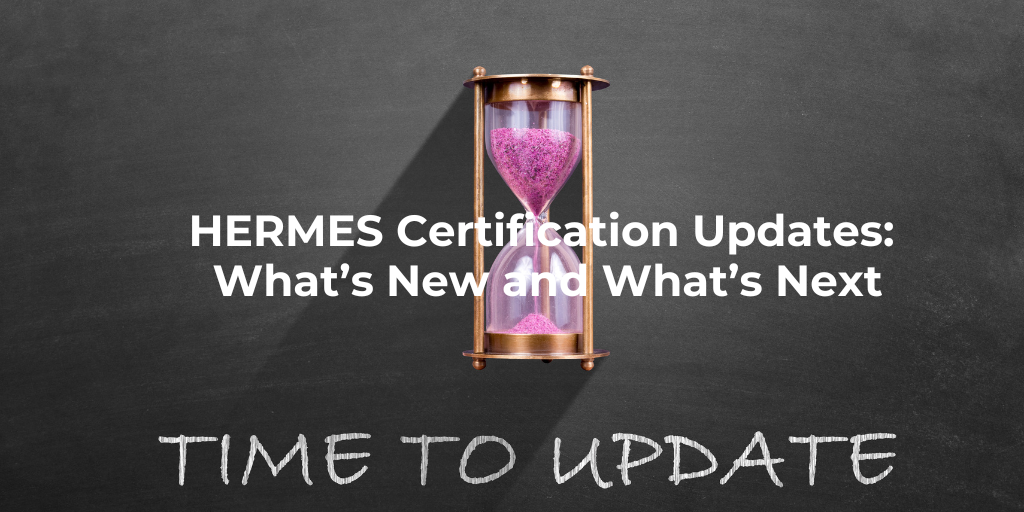
HERMES certification continues to grow and evolve to meet the needs of project professionals. With over 22,000 certifications issued in four languages and the support of 29 accredited training partners, the method remains a reliable and practical framework for project management.
Demand for both Foundation and Advanced levels remains strong, with nearly 80% of candidates opting for online exams, highlighting the flexibility and accessibility of the certification process.
Key Updates for 2025–2026
- 30 September 2025: publication of the revised reference handbook
- 1 January 2026: release of updated training materials
- 1 February 2026: introduction of updated exam questions
These updates follow the “Unfreeze–Freeze–Unfreeze” model, keeping HERMES dynamic and aligned with modern project practices.
Clear Paths for All Levels
- Foundation: project staff, junior project leaders, decision-makers, and controllers
- Advanced: experienced project managers and subproject leaders
Exams consist of multiple-choice assessments with transparent evaluation criteria and are available online via a secure setup without additional installations.
TÜV SÜD oversees the process to ensure impartiality and quality, while training partners deliver recognized courses to prepare candidates for success and support professional development.

HERMES is a comprehensive management system that can be used for different types of projects and programmes, such as organisational changes, IT projects or service development. It was developed by the Swiss Confederation, which offers it free of charge as an open standard.
HERMES 2022 is an open standard for the management and execution of IT project. It is the Swiss method of project management in information technology, service and product development, and business organisation adaptation.
The HERMES certification scheme has two main levels, HERMES Foundation and HERMES Advanced.
The HERMES method has been developed since 1975 and has been constantly refined with the active support of users and technical experts.
Since 1975 HERMES has been used by the Federal Administration to manage and implement IT projects. Over the years it has been further developed and revised.
HERMES ensures a common understanding of the project and supports all project participants in the efficient and successful fulfilment of their tasks and responsibilities. Due to its clear structure, it supports different use cases and can be easily customised according to project needs.
HERMES Project Management Method: Components
HERMES project management facilitates the control, management and implementation of projects, supporting the development of organisational structures, products, services, IT systems, logistics and infrastructure of varying complexity. A project can be divided into sub-projects, each focusing on specific aspects (e.g. users, creators, operators, organisation, IT, legal bases).
Complex or long-term projects do not necessarily have to be structured as programmes, but can be managed as projects with operational units.
HERMES project management presents a clear and comprehensible methodology with uniformed terminology for all participants. It has a modular structure, which is easily expandable and is continuously updated and improved.
HERMES is developed according to:
- Phases
- Scenarios
- Modules
- Outcomes
- Roles
1.Phases
The HERMES phase model is the backbone of every project, ensuring a common understanding between participants and supporting effective cross-organisational management. Based on the project lifecycle, it includes an “initiation” phase at the beginning and a “closure” phase at the end, applicable to both classical and agile approaches, covering all phases of solution development.

Source: Bundeskanzlei Hermes Online
Projects follow five or three phases: initiation, concept, implementation, deployment and closure for the classical approach, and only initiation, implementation and closure for the agile approach. The initiation phase defines the possible solutions and the path to follow, while the closure phase concludes the project and manages the organisational transition.
The decision between the classical and agile approach is made during the initiation phase, based on technical and procedural justifications. In a programme, some projects may adopt the classical approach and others the agile one.
2. Scenarios
In an organisation, various projects are carried out, differing in content and complexity. HERMES project management offers scenarios to manage this diversity, defining a development process from initiation to closure: in the classical approach, this includes concept, implementation and deployment; in the agile approach, implementation.
A scenario guides the implementation of specific projects, containing the essential elements of the HERMES method for the development of solutions, making project management simple and fast.
During the initiation phase, the project manager chooses the appropriate scenario for the development process, planning the procedure and development of the solution. HERMES offers a selection of standard scenarios, such as for organisational adaptations or service/product development. HERMES users can adapt the standard scenarios to their own requirements by creating custom scenarios.
3. Modules
Modules are reusable components assigned to the various phases for the creation of projects and scenarios. A module consists of results thematically related to the associated tasks. The project manager can create additional modules and integrate them into the individual scenarios.
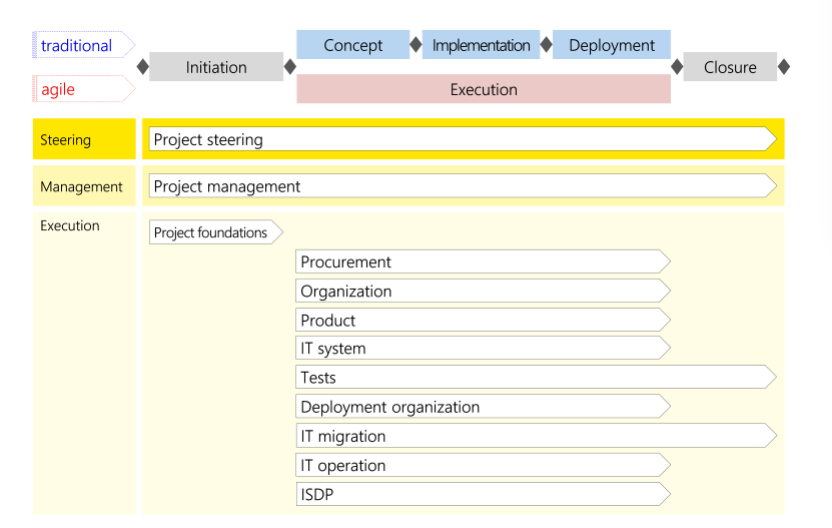
Source: Bundeskanzlei Hermes Online
4. Outcomes
Each outcome is described in detail, with specific documents. Tasks and roles are assigned, indicating responsibilities and involvement.
HERMES establishes the essential required documents for project governance. Milestones mark the beginning and end of phases, guaranteeing quality in decisions.
In an agile approach, an optional release can be requested, generating additional milestones. All milestones represent critical decision points of the projects. Depending on the module, there are several additional decisions and milestones.
5. Roles
HERMES Project Management distinguishes between roles in the core organisation and in the project organisation, but focuses exclusively on project organisation. Each role is described with its responsibilities, competences and relationships, and it is assigned to a specific hierarchical level. Different roles have been defined to suit different needs.
User, creator and operator are partners included in the project organisation, each assigned to specific roles.
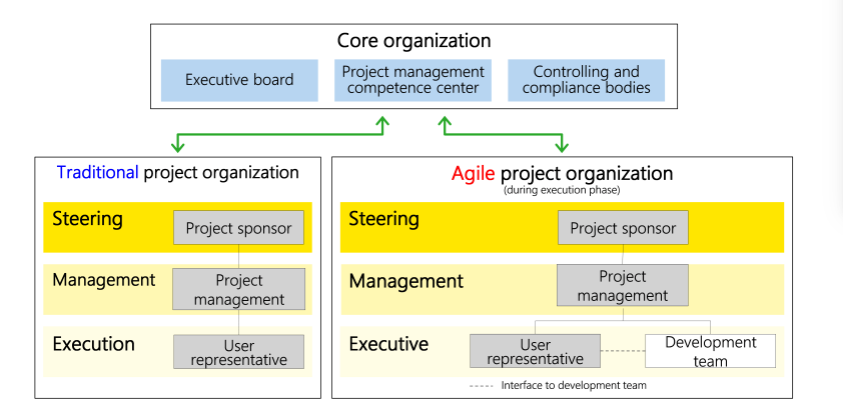
Source: Bundeskanzlei Hermes Online
HERMES 2022 and HERMES 5: Main Differences
The 2022 edition of HERMES Project Management reflects the evolution of project design and user expectations for a more advanced approach than the previous Hermes 5.
The HERMES method integrates the agile development approach into the phased model, taking existing governance and interfaces into account, with greater emphasis on organisation and business orientation than on IT.
HERMES distinguishes between classic and hybrid project management, enabling the standardised integration of agile methods. The basic structure and methods remain unchanged, but the results are now at the centre, with some changes to the chapter titles.
The HERMES terminology is essentially unchanged. Classical development puts the activity at the centre, while agile introduces a possible release authorisation for the client, while maintaining governance.
The main changes include:
- Project phases now consider agile requirements.
- Project management is central, with agile as a black box.
- The project starts with a lean initialisation phase.
- The procurement process is planned already in the initialisation phase.
- The milestone control function is strengthened and it is applicable regardless of the chosen procedure.
- Tasks now define the required deliverables.
- Minimum roles: project sponsor, project management and user representative,
- with clearly separated management and technical competences.
- The project manager requires management rather than specialist skills.
- The user representative has increasing technical responsibility.
Like previous editions, the manual provides a basis for larger projects tailoring the method based on the project. The aim is to reduce the complexity and increase the user-friendliness of HERMES project management.
The HERMES Certification: Main Benefits
The HERMES method is designed to support the steering, management and execution of projects with different characteristics and levels of complexity. Thanks to its modular structure, it can be adapted and expanded according to specific needs.
HERMES distinguishes between classic project management and hybrid management. Hybrid management enables the integration of various agile development approaches in a consistent manner.
HERMES is an open method, developed by the Swiss federal government and recognised by the eCH association as a standard (eCH-0054).
HERMES is an immediately usable tool offering numerous advantages for project management. With its methodological support based on a web interface, it provides specific scenarios for the concrete realisation of projects, together with checklists and templates that facilitate the execution of activities.
The simplicity and intuitiveness of HERMES are among its key points. It offers clear task descriptions through well-defined activities, concretely described roles and document templates for quick results.
HERMES is a valuable aid for various people involved in projects:
- For contractors, it facilitates the implementation of governance and sustainability.
- For project managers, it supports the planning, control and management of activities.
- For project staff, it simplifies the execution of tasks.
- For management, it facilitates overall strategic project management.
In summary, HERMES is a versatile and accessible tool, ideal for improving efficiency and effectiveness in project management at various organisational levels.
HERMES Certification Programme
The HERMES certification programme has two main levels:
The HERMES Foundation level is intended for those who require a general knowledge of HERMES.
The Foundation examination is designed to ensure that the candidate has a basic understanding of the HERMES project management methodology. The candidate will have a thorough understanding of the interplay between the various elements of the methodology, will know how to approach a project in a methodical manner and will be prepared to work effectively on HERMES projects.
The HERMES Advanced level prepares participants for the practical application of the HERMES method.
The HERMES Advanced examination aims to ensure that the candidate knows how to manage and lead a HERMES project and has practised selected project management tasks by working on case studies.
Obtaining the HERMES Certification
QRP International offers HERMES through onsite (in Zurich and Geneva), virtual courses and also through the online option of the HERMES E-Learning.
The body responsible for certification is TÜV SÜD.
The HERMES Foundation certificate is valid indefinitely.
The HERMES Advanced certificate is valid for five years. To renew it, the necessary documentation must be submitted to the TÜV SÜD body.
Advanced certification and recertification are guaranteed by the TÜV SÜD Examination Institute.
Sources:

HERMES Foundation Target Audience
- Project Managers
- Project Team Members
- Controllers
- Decision Makers
- PMO Staff
- Quality Management
- Governance/Steering Management
HERMES 5 Foundation Exam Format
- Language: German, English, French
- Duration: 60 minutes
- Questions: 40
- Objective test questions
- Materials: No reference materials allowed
- The exam consists of 40 multiple-choice questions from the following topic areas:
- HERMES Fundamentals (including methodology structure, views, phases, deliverables, tasks, roles, modules, and scenarios)
- Application area and structure of the standard scenario “Service – Product”
- Modules of the “Service – Product” standard scenario
- Project organisation (roles) of the “Service – Product” standard scenario
HERMES Foundation Sample Questions
- The exam includes 40 sample single-choice questions.
- Only one answer is correct per question.
- Correct answers are awarded 1 point.
- Unanswered or incorrect answers receive 0 points.
- No negative points can be earned for a question.
- a) HERMES Fundamentals (e.g., methodology structure, views, phases, deliverables, tasks, roles, modules, and scenarios)
- b) Application area and structure of the standard scenario “Service – Product”
- c) Modules of the “Service – Product” standard scenario
- d) Project organisation (roles) of the “Service – Product” standard scenario
Example of a “Standard” Question
Which statement about the "Organisation " module is correct? a) The "Organisation" module describes the implementation organization. b) The "Organisation" module describes the adaptation of the organization. c) The project organisation is defined in the "Organisation" module. d) The operational organization is defined in the "Organisation" module.Example of a “Missing Word” Question
Complete correctly: Modules… a) …are building blocks for creating projects and scenarios. b) …are thematic groupings of deliverables, tasks, and roles that are not directly related to solution development and implementation. c) …do not consist of tasks and deliverables. d) …describe the lifecycle of projects with specific characteristics.Example of a “Negative” Question
There are four fundamental ways to adapt an existing scenario or create your own individual scenario. Which is not one of them? a) Remove tasks and deliverables b) Add a project-specific role to a module c) Remove modules from an existing scenario d) Integrate an additional domain-specific module into the existing scenarioHERMES Foundation Learning Objectives
After completing the HERMES training , participants should:
- Understand the fundamentals of HERMES project management
- Have an overview of the application and structure of the two standard scenarios “Service/Product Development” and “Adaptation”
- Have gained in-depth insights into the modules “Project Steering, Project Management, Project Basics, Procurement, Organisation, Product, and Implementation Organisation” in the context of a complete project using the “Service/Product Development” or “Adaptation” scenarios
- Have explored project organisation (roles) and their responsibilities in depth within a project context based on the “Service/Product Development” or “Adaptation” scenarios
- Know how to create individual scenarios
- Pass the Foundation exam in order to receive the HERMES Certification
HERMES Foundation Certification
Participants who pass the exam receive a certificate. Those who do not pass will receive a certificate of participation indicating the exam attempt. The certification body that offers HERMES certification in Switzerland is TÜV SÜD Academy. The HERMES Foundation Certificate is valid for life and does not expire. TÜV SÜD provides comprehensive information on certification and recertification on its website. Visit our HERMES Foundation page or contact us to learn more!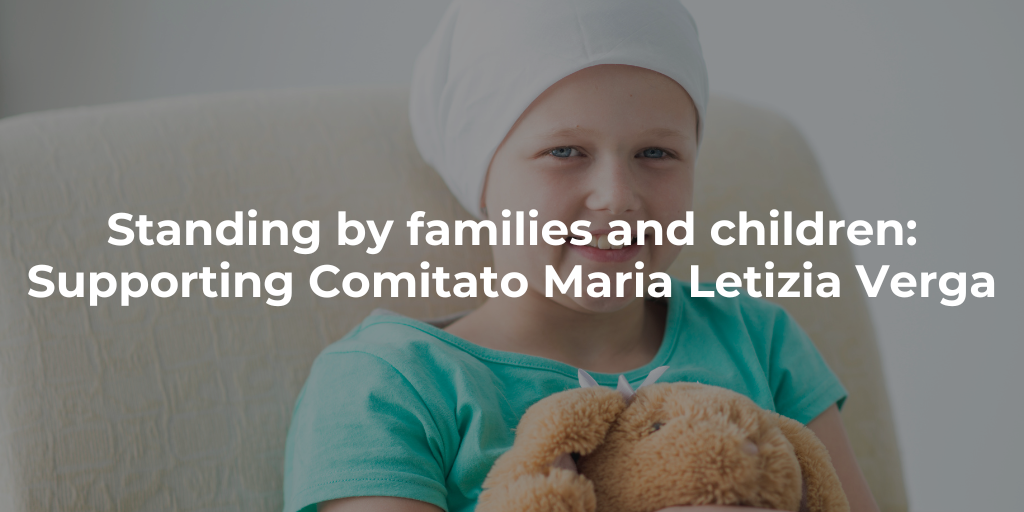
The Comitato Maria Letizia Verga
Founded in 1979 by Giovanni Verga, the father of Maria Letizia, the Comitato Maria Letizia Verga is an association that unites parents, volunteers, friends, supporters, researchers, doctors, and healthcare professionals in an Alliance with a shared mission: to improve the overall quality of life of children and adolescents affected by hematological malignancies diseases, as well as complex therapeutic, metabolic, and genetic conditions. For over 45 years, the Comitato has led numerous initiatives to study and treat childhood leukemia, providing care and treatment to over 2,500 children and adolescents. Thanks to its efforts, the recovery rate has significantly increased — from 30% in 1979 to 85% today. In particular, the Comitato Maria Letizia Verga has:- Invested over €120 million in research, treatment, and patient care;
- Established the Maria Letizia Verga Center, an integrated system designed to address the complex needs of children with leukemia and their families. Located within the IRCCS San Gerardo dei Tintori Foundation, it combines research, treatment, therapy, and support services;
- Built the Maria Letizia Verga Residence, providing accommodation for children and adolescents undergoing treatment at the Center, along with their families;
- Promoted the creation of the Tettamanti Research Center and the Monza and Brianza Foundation for Children and Mothers;
- Established the Stefano Verri Cell and Gene Therapy Laboratory, a cell factory inaugurated in 2003 in collaboration with the Tettamanti Foundation and the Stefano Verri Committee.
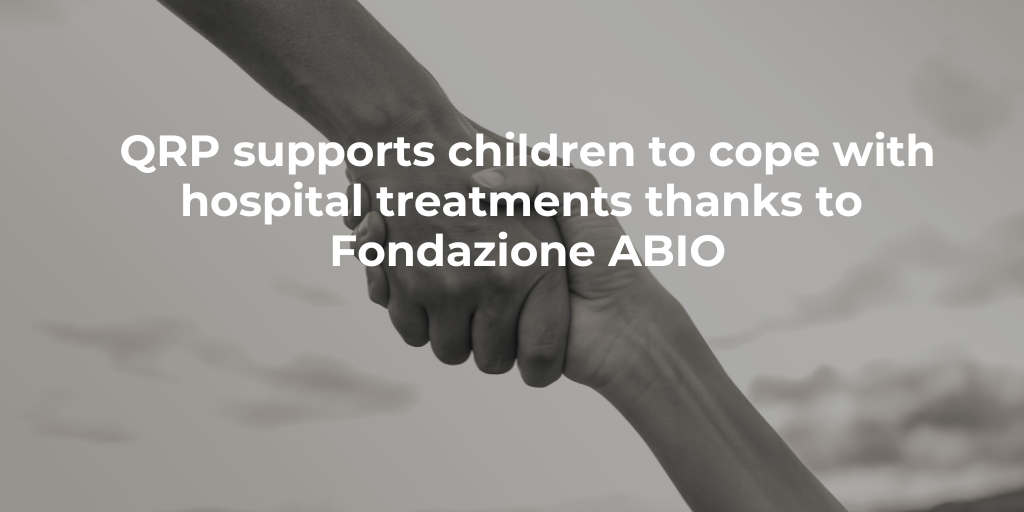

The HERMES Advanced level is the certification aimed at project managers. HERMES knowledge equivalent to the Foundation level is required.
HERMES Target Audience
- Project Managers
- Project Team Members
- Controllers
- Decision Makers
- PMO Staff
- Quality Management
- Governance/Steering Management
HERMES Advanced Exam Format
- Languages: German, English, French
- Duration: 2 hours
- Each of the two parts lasts 60 minutes, with a break in between
- To pass the entire exam, at least 60% of the maximum score must be achieved in each part
PART 1: No reference materials allowed ("Closed Book") PART 2: Allowed materials include the reference manual and scenario overview BK ("Open Book")
The exam consists of a two-part written test: Part 1: Multiple Choice – 30 questions, one or more correct answers Part 2: Multiple Choice with practical scenarios – 15 questions, one or more correct answers
Exam topics include:
- Fundamentals of HERMES project management
- Application of the method, assessment of situations, and drawing conclusions in the “Initialization” and “Closure” phases
- Modules: “Project Steering” and “Project Leadership”
- “Organisation” module
- Use of the “Planning Use Case” and “Explanatory Notes”
HERMES Advanced Exam Sample Questions
The exam consists of two parts:
- Part 1: Multiple Choice – 30 questions, one or more correct answers
- Part 2: Multiple Choice with practical scenarios – 15 questions, one or more correct answers
Sample Questions – HERMES Advanced, Part 1:
For each question, one or more answers may be correct.
- Correct answers = +1 point
- Incorrect answers = –1 point
- Unanswered = 0 points
- Minimum score per question is 0 points.
Questions types: Standard, List, Negative
Example – “Standard” Question
Which decisions are made by the “Steering” level in the “Service/Product Development” scenario?
a) Phase release decision b) Release approval decision c) Operational start decision d) Decision on further proceedings
Example – “List” Question
You are a project manager in a project to develop and implement a unified glossary software in a cantonal administration. The project is in the “Implementation” phase.
Evaluate the following statements:
A) The client is not necessarily required to make the “Release Approval” decision, BECAUSE B) The “Decision on Further Proceedings” determines whether “Release Approval” is mandatory.
- A) is true and B) is true
- A) is false and B) is true
- A) is true and B) is false
- A) is false and B) is false
- A) is true because B) is true
Example – “Negative” Question
Mark the correct statements regarding the following claim:
“The Implementation Structure Plan is not modeled as a result in HERMES.”
- The claim is correct, because the implementation structure plan is part of the project management plan.
- The claim is incorrect, because the implementation structure plan is a result of variant selection.
- The claim is correct, because the implementation structure plan is included in the study.
- The claim is correct. Creating the implementation structure plan is the basis for further elaborating the project management plan.
Sample Questions – HERMES Advanced, Part 2
For each question, one or more answers may be correct.
- Correct answers = +1 point
- Incorrect answers = –1 point
- Unanswered = 0 points
Minimum score per question is 0 points.
Note: All questions and answers refer exclusively to the HERMES project management method and the reference manual.
Question types: Standard, List, Negative
Your Role: As a project manager, you are responsible for redesigning the website of a railway company.
Practical Situation: The study with the selected solution variant “implementation of an external standard CMS solution” has been completed according to HERMES. You are now preparing the project management plan.
Which components will you include in the project management plan according to HERMES?
- The test plan. It will be conducted according to the test concept document X.
- The application for phase approval.
- The project organisation. It is defined up to the "Introduction" phase.
- The selected scenario with implementation structure plan.
- The change management section, which includes a list of all processed changes.
HERMES Advanced Learning Objectives
After completing the course, participants should:
- Have in-depth knowledge of how a project is initialized and closed, and how project foundations are developed
- Understand how to manage and lead a project, and practice implementing selected tasks from the related modules
- Know the execution-relevant modules for solution development, through detailed work with a case study. Participants will practice implementing tasks and assigning responsibilities to roles
- Understand the "Organisation" module using case studies based on any standard scenario, recognize its importance in all HERMES projects, and practice implementing selected tasks from the module
HERMES Advanced Certification
Participants who pass the exam receive a certificate. If registered early and the exam is passed, the certificate is issued immediately after the exam. For short-notice registrations, the certificate is issued approximately 2–3 weeks after the exam.
The certification body offering HERMES in Switzerland is TÜV SÜD Academy.
Certificates issued by TÜV SÜD Examination Institute are valid for five years (for certificates issued since 01.01.2020).
TÜV SÜD provides comprehensive information about certification and recertification on its website.







